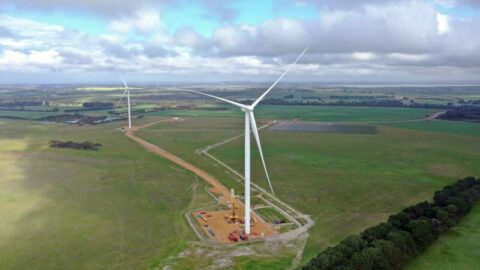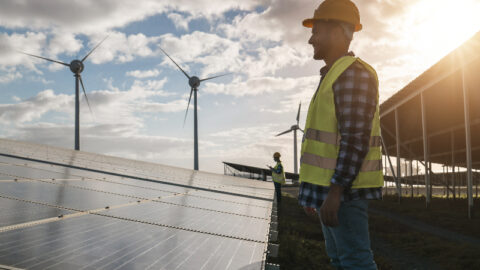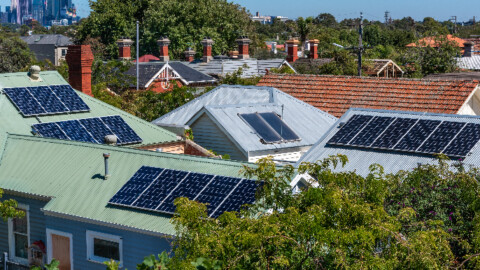In a world-first project, students from UNSW Sydney will be wholly designing, building and operating a nuclear fusion device on the University’s campus.
The program is part of the University’s Vertically Integrated Projects (VIP) scheme that is designed to engage undergraduate and postgraduate students in ambitious, long-term, multidisciplinary challenges led by UNSW academics, with this program focused around the training of nuclear engineers.
The fusion construction project is headed up by nuclear engineering expert Dr Patrick Burr from the UNSW School of Mechanical and Manufacturing Engineering, who aims to have a working device operating within two to three years.
Dr Burr said that the project will be the first in the world where students will design, build and manage a fusion reactor.
“We want to excite the next generation of innovators and make them realise how they can make a big change in the world.
“The students involved in this project will have to develop solutions to big engineering challenges, work closely with industry partners, and push the boundaries of what is possible with fusion energy.
“They will have to master skills that are also highly-sought after in other industries, like safety-critical infrastructure, transportation, outer space and of course conventional nuclear technologies.”
Many research universities around the world, including those in Japan, South Korea, Switzerland, Turkey and the US, already operate traditional fission reactors for training of nuclear engineers, materials testing, or the production of radioisotopes for medicine and industry.
Thermonuclear fusion is a process where atomic nuclei are massively heated up, typically to 150-300 million degrees Celsius, and then fused together under substantial force, releasing a large amount of energy in the process.
It is the same process that powers the sun and has the potential to provide clean and abundant energy on Earth if successfully harnessed. Fusion energy is one of the fastest growing energy sectors globally, and there is considerable work going on around the world to harness fusion as a future clean energy resource.
Fusion is the opposite reaction of nuclear fission, which powers conventional nuclear power plants.
Instead of breaking up heavy elements like uranium, it fuses together light elements that are abundant on our planet, like hydrogen, or boron. The process does not rely on a chain reaction, and the by-product is helium, an inert gas and also a valuable resource.
Unfortunately, creating and maintaining the extreme conditions of heat and pressure required for atomic nuclei to overcome their natural repulsion and fuse together is very challenging.
UNSW’s first fusion-capable machine will be ‘tokamak’, a doughnut-shaped vacuum chamber with powerful magnets to control and heat streams of plasma to extreme temperatures, at which point nuclear fusion is possible.
This will potentially be followed by other devices that could achieve fusion using different methods, such as high-power lasers.
The program is being supported by industry partners Tokamak Energy and HB-11 Energy.
Fusion is widely considered to be inherently safe since the process is not based on a chain reaction, as is the case with nuclear fission.
“It can be seen as an energy amplifier, rather than an energy generator, so when you turn off the switch there is nothing to amplify and the device shuts down, just like a light-bulb,” Dr Burr said.
Although the VIP project aims to create a fusion-capable machine, there is no intention to actually attempt to fuse hydrogen once it is built.
“Scientists have spent decades doing fusion experiments to understand what is required to achieve fusion, even for just a period of nanoseconds,” Dr Burr added.
“Now that we understand that, we are left with the engineering challenge of how to sustain those extreme conditions for hours or even days at a time.
“We don’t need to do fusion to answer that, we just need to maintain a plasma of a few million degrees Celsius, without breaking down any of the sensitive components around it.”
Therefore, the student-built device will be operated without introducing any fuel that can actually create a fusion reaction.
Even so, the UNSW team will also work closely with the Australian Radiation Protection and Nuclear Safety Agency (ARPANSA) and the Australian Safeguards and Non-Proliferation Office (ASNO), to ensure the project remains compliant with all regulations.
“The tokamak device is small, around 1m by 1m, and during the initial build and testing the biggest risk is dealing with high voltages, which is a well-known hazard in our labs, for which we have special cages to keep everything very safe,” Dr Burr said.
“Being involved in nuclear engineering for many years, I am aware that new technology in this area can be very polarising.
“Sometimes in the nuclear industry the engineering happens and then, almost as an afterthought, a spokesperson has to try to explain what the impacts are on society.
“But for this program we are determined to put the discussion about societal impact right at the front and centre.
“This is a cross-faculty project, including academics from social sciences and arts, and our VIP students will study and analyse what the public perception of fusion technology really is and discover how best we can engage with society to share the benefit it could bring.”
















